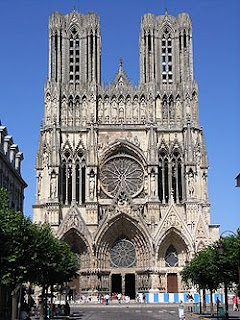There are many architecture styles. In our work at Eberly & Collard Public Relations, we have the great pleasure of being exposed to many of them. Our work with professionals who specialize in the conceptualization and creation of homes, commercial buildings, urban sites, and public spaces has afforded us a unique view of design and architecture, to be sure. As a result, our publicity work and writing projects have provided us with insights regarding structural design.
Ranging from Gothic to Modern, the last few centuries have produced some amazing and unique architectural characteristics. For our friends and fans in the industry, or those who are simply fascinated with the different styles of architecture, the ECPR team has uncovered the history behind a small selection of popular building methods.
Gothic:
First modeled after Romanesque architecture, Gothic architecture flourished during the Renaissance period. Key characteristics include pointed arches, ribbed vaults and flying buttresses. A good example of this style of architecture is the Sagrada Familia located in Barcelona, Spain, or the infamous Roman Catholic Church, Notre-Dame de Reims in Paris. The term “Gothic” dates as far back as 1530, where Giorgio Vasari, an Italian painter, writer historian and architect, used the term to describe culture that was considered rude and barbaric. Common materials used to build Gothic architecture are limestone, red sandstone, Purbeck marble, brick, and stone. Gothic style puts emphasis on verticality and light, and is achieved by implementing vaulted ceilings, columns, large windows, and intricate detailing.
 |
| Notre – Dame, Photo Courtesy of Wikipedia |
Neoclassic:
Neoclassic architecture was developed in the mid-18th century. Derived from classic Greek architecture, neoclassic embodies baroque tendencies and was considered to be evocative and picturesque. Key characteristics include planar qualities, columns, wall and ceiling engravings, and geometrical shapes. Some notable examples of neoclassic architecture are the United States Capitol Building, Jefferson Memorial and the White House. In the United States, the neoclassical period emerged during the American Revolution, as a rebellious response to Britain’s dominance and desire to construct a new world.
 |
| U.S. Capitol Building, Photo Courtesy of Wikipedia |
Vernacular:
Vernacular architecture uses locally available resources, materials and traditions to construct homes and buildings in a given region. Several components influence vernacular styles, including climate, culture and environment. These styles can range from typical southern homes in the South to log cabins in mountainous areas. The term vernacular architecture was used during the 1800’s and has since become an economic globalization phenomenon.
 |
| The Battery, Photo Courtesy of Historic Tours of Charleston |
Modern:
Some say modern architecture began during the early 20th century to keep up with technological advances and the modernization of societies. This style of architecture was adopted by world-renowned architects such as Frank Lloyd Wright and Louis Kahn. Notable distinctions include simplicity, horizontal and vertical lines, use of steel, concrete and glass. This style of building has straightforward forms without ornamental structures to them. Some examples include the Kaufman House, designed by Frank Lloyd Wright and the Seagram Building in New York City.
 |
| Fallingwater, Photo Courtesy of wright-house.com |
While we only listed four types of architecture styles in this post, there are hundreds of different styles and methods still being built today. Friends and fans, do you have a favorite architecture style? If so, please feel free to add your comments below.